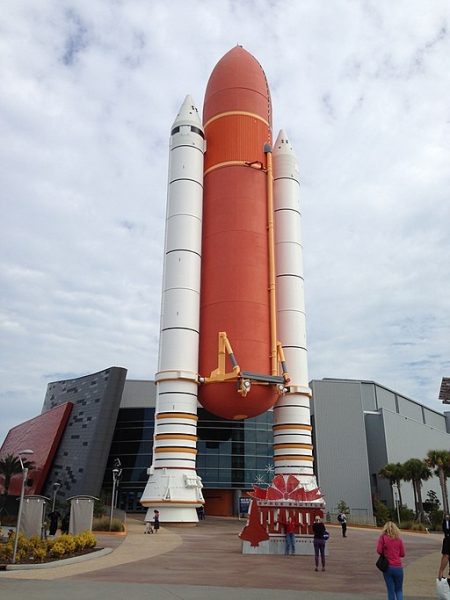Whenever we envision the iconic Space Shuttle, its massive external fuel tank, cloaked in a striking orange, frequently captures our attention. Yet, this vivid shade wasn’t always part of the shuttle’s appearance. The transition from a clean, pristine white to a bold orange narrates a story of engineering pragmatism and an unwavering drive for efficiency in space exploration.
The Early Years: A White Beginning
Initially, the external tanks of the Space Shuttle were painted white. Thermal considerations drove this decision—white being highly reflective, it was thought to protect the tank against the harsh thermal environment of space. The first two flights of the Space Shuttle featured these gleaming white tanks. The paint itself added approximately 600 pounds to the tank’s weight, a seemingly minor addition when considering the scale of space machinery.
A Turn to Orange: Unveiling the Natural Color
As NASA continued to refine and optimize the shuttle for more efficient space travel, the removal of the white paint was proposed. This decision was not made lightly, as every aspect of the shuttle underwent meticulous scrutiny. Engineers realized that by stripping the tank to its natural, rust-orange colored insulation foam, they could shed the extra weight of the paint. This modification, adopted after STS-3, considerably reduced the total launch weight and enhanced the payload capacity.
The signature orange hue associated with the Space Shuttle actually stemmed from the natural color of the spray-on foam insulation that coated the tank. This insulation was vital, shielding the tank’s super-cooled liquid hydrogen and oxygen fuel from the intense heat encountered during lift-off and the initial climb. The foam also minimized ice formation on the tank’s surface, which could pose a risk to the shuttle if detached during launch.
Technological and Aesthetic Implications
The shift from painted to unpainted tanks was not merely cosmetic. It reflected deeper technological efficiencies and a weight-saving philosophy where every ounce mattered. The paint removal allowed for an additional 600 pounds that could be allocated toward scientific equipment, experiments, and other payload enhancements.
Moreover, this change decreased the risk of paint flecking off during launch, which could potentially damage the shuttle’s thermal protection system. The raw, foam-covered look of the tank also became a visual testament to the pragmatic and practical approach that space missions often entail.
The Legacy of the Orange Tank
The orange fuel tanks served the Space Shuttle Program until its conclusion in 2011. Throughout its service, the external tank underwent numerous enhancements, but the orange insulation remained a constant, becoming an emblem of the shuttle itself. The unveiling of the orange foam through design alterations tells a broader tale in aerospace engineering—where functionality, safety, and performance are valued above aesthetic appeal.
The shift in the Space Shuttle’s external tank from white to orange marks a striking episode in the history of space exploration. It highlights the flexibility of human creativity when tackling complex problems and continues to provoke thought on how small changes can lead to significant breakthroughs in aerospace technology. The orange tank emerges not merely as a technical requirement but as an emblem of the ongoing drive for enhancement that characterizes our endeavor to venture beyond the confines of Earth.
For more insights into the Space Shuttle Columbia and other important military aircraft, visit Aces In Action. Here, you’ll find an amazing piece of artwork by Craig Tinder titled “Space Transportation System-1,” which illustrates the first flight of Space Shuttle Columbia as it rockets towards the heavens as the first “reusable” spacecraft. The limited edition canvas print even includes a piece of Columbia’s (Orbital Vehicle #102 – OV-102) thermal insulation liner, making it a unique piece of history!
Space Transportation System-1 – Space Shuttle Columbia Space Art by Craig Tinder
12 April 1981 – The first reusable spacecraft of its kind, the orbiter Columbia, lifted off promptly at 102:12:00:03.9 GMT from Launch Complex 39 at the Kennedy Space Center marking a new era in manned spaceflight and human exploration. Columbia orbited the Earth 36 times within 54 hours to demonstrate a safe launch to orbit and return of the orbiter and crew. Columbia touched down on 14 April on Runway 23 at Edwards Air Force Base. All major systems aboard Space Transportation System – 1 tested successfully and the Space Shuttle’s worthiness as a space vehicle was verified.
To purchase or see similar items, visit here.
Commissioned by Museums, Treasured by Collectors





Share:
Preserving History: The Journey of B-26 Marauder
Patriotic Skies: The Role of Airpower in American Independence Celebrations